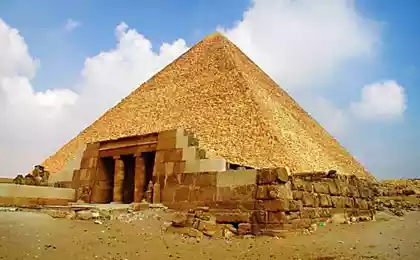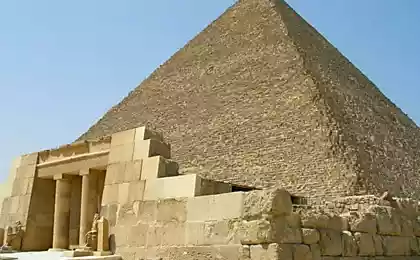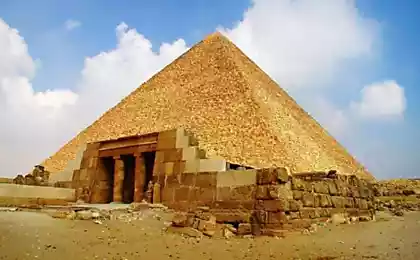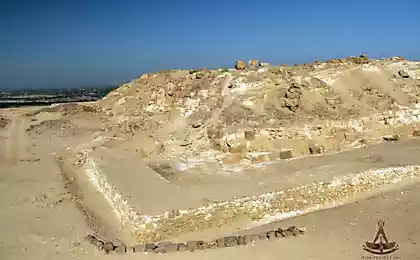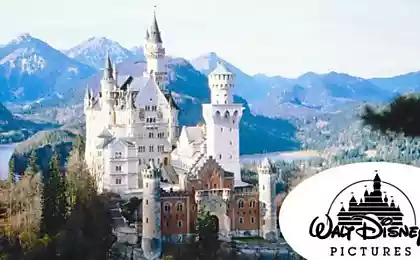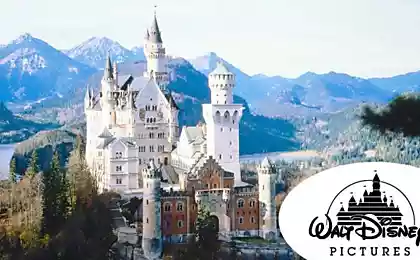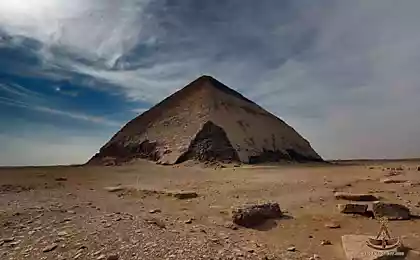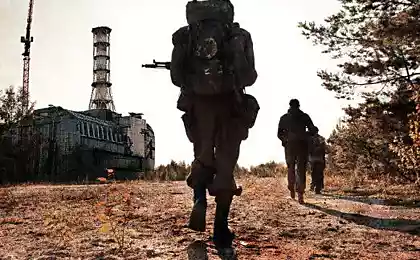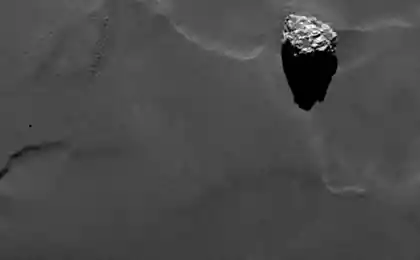1919
One of the mysteries of Khufu
South Mine in the Egyptian pyramid of Cheops (Khufu), was first discovered in 1872, when Ueynman Dixon (Dixon) found a crack in the wall and put his rod into the hole, without encountering any resistance. This discovery prompted the Bill Grundy (Grundy) using chisels to break limestone and discover the mysterious channel.
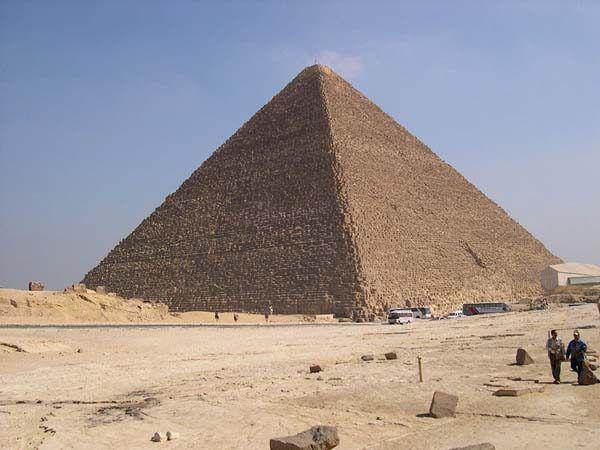
In the northern mine they found the stone ball and a piece of wood and in South mine was found hook made of copper or bronze.
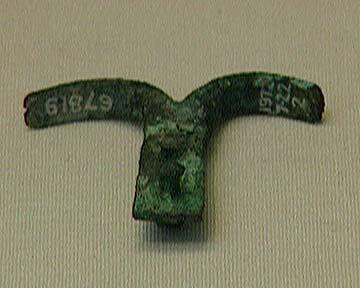
Both artifacts were brought to England and a member Astronomer Royal of Scotland.
Reported the discovery on December 26, 1872, the journal "Nature" published drawing of these artifacts, and then they disappeared ...

In 1993, the search resulted in the British Museum, where they are today.
Part of the tree, found in mines, absent until 2001, until surfaced in the museum Marischal, Aberdeen.
Although the latter is confident that the fragment tree is among their collections, they have not yet determined its position among the finds.
In the mine, and later studied Gantenbrink was just discovered a fragment of a long piece of wood lying in its bending, which was very similar to the previously discovered in the northern mine in 1872.
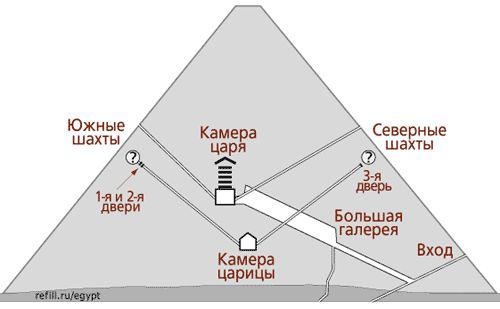
In 1993, due to the remarkable discovery raised a wave of new interest in the Great Pyramid. German engineer Rudolf robotics Gantenbrink hired to install inside the pyramid of ventilation systems, received permission to design a robot to explore the mine in the Queen's Chamber. Unlike similar mines coming from the King's Chamber,
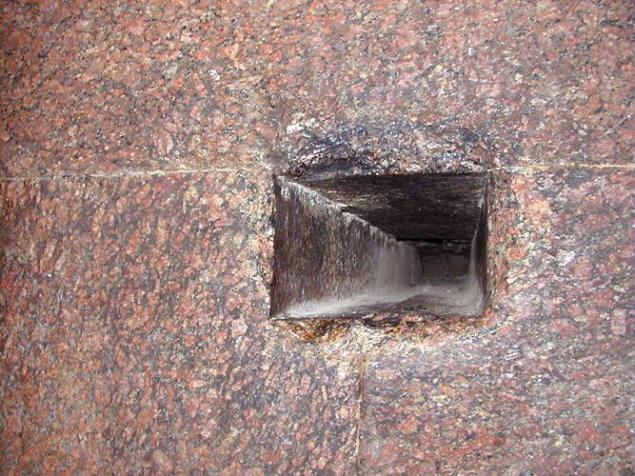
these approximately 20-centimeter square of the mine did not have a known destination, they were on the surface of the pyramid. A detailed account of these studies anyone can find on a personal site Gantenbrink: www.cheops.org/
The robot, named Upuat II (Upuaut II, the discoverer of ways) and equipped with lights, a camera and a laser pointer, received excellent reviews specialists. Go up the South Mine Queen's Chamber robot ran into a solid block of limestone, from which protruded two mysterious brass details.
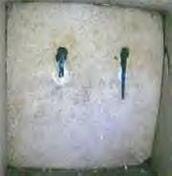
Monday, 16 September 2002 at 8:00 pm Channel FOX (USA) started the live broadcast of the new study South mine in the Queen's Chamber in the Pyramid of Khufu.
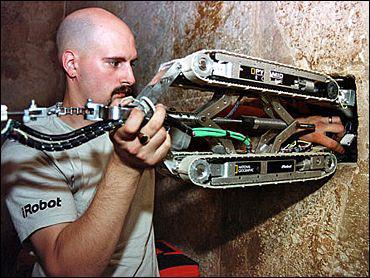
The two-hour prelude FOX / National Geographic on the Giza plateau was preceded by a moment when, finally, the new robot reached the mysterious "doors" and inserted into a drilled hole camera.
Was done painstaking preliminary work. To determine the length of the drill bit, it was necessary to know the thickness of the first block of limestone using ultrasound. Dr. Hawass oversaw preparation, and then gave the order to drill so-called "door».
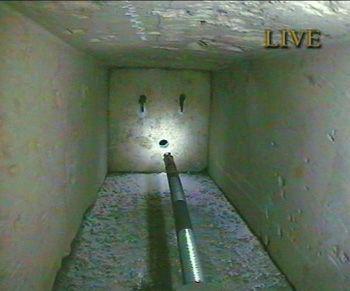
Now let's review the ideas about what lies behind the "door».
Before broadcasting Dr. Zahi Hawass, chairman of the Supreme Council of Antiquities (SCA) in Egypt, expressed the hope that is found some book might blog Khufu.
According to Hawass doors were built for religious purposes because of the books, hiding behind them. Books were called to lead the dead to the underworld dangerous roads.
German Egyptologist Ranier Stadelman (Stadelman), who led the work of Rudolf Gantenbrink in 1993, believed that the door is designed for the soul of the pharaoh seeking to achieve Osiris (the star Sirius). He believed that copper objects serves as a handle by which Pharaoh will open the "door».
Robert Bauval, author of "The Orion Mystery", predicted that at the end of the shaft will be found the statue, and the mine was used for observing the stars.
John Anthony West, author of "Snake in the sky," said that behind the door there is nothing but stone.
Georgie Nuri (Noory) argued that behind the "door" is a place about 10 meters long, which contains the sacred sand.
The excitement reached its peak. Hawass warned viewers that the door can be anything or not. His comments come to seem prophetic reality, because the camera is passed through the drilled hole, and appeared distorted. At first nothing was visible.
Video:
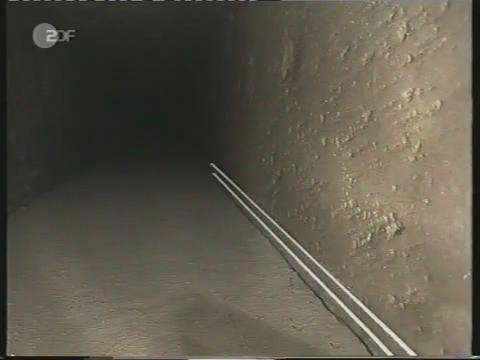
With inimitable style and undisguised satisfaction Dr. Hawass declared: "This is - another door, and with a crack!»
A week later, Hawass has promised to continue the research with the National Geographic Society.
September 23, 2002 in the news reported that successfully investigated North mine in the Great Pyramid. This mine, located opposite its southern "sister", the robot Gantenbrink could not examine because of impassable last bend. The current team has taken into account the previous shortcomings in the design of the robot. Robot 2002 could drive around a bend as moving across the floor of the mine and on the ceiling.

Sent to North mine robot found another obstacle, like "doors" Gantenbrink South mine.
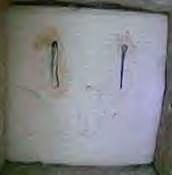
Note that this unit also has two metal brackets, but in better preservation.
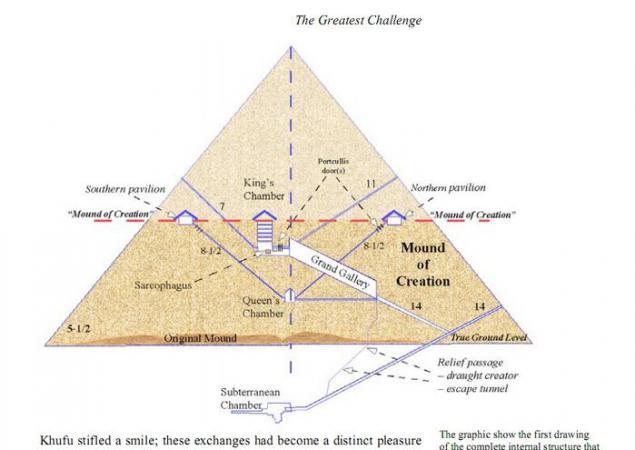
On 2009 - 2010 год Zahi Hawass planned drill and a second door behind the first, with metal handles.
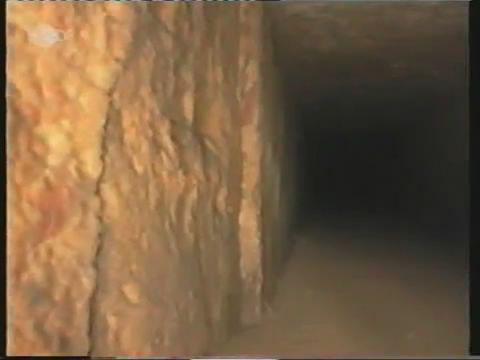

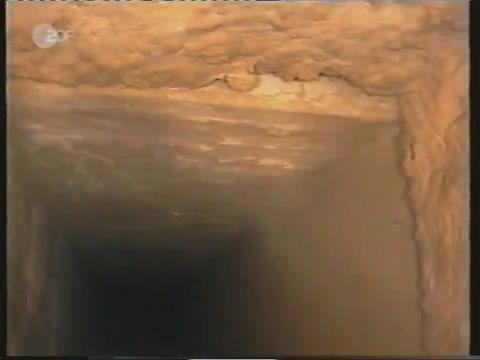
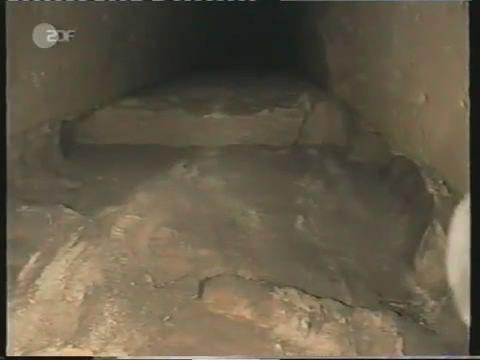
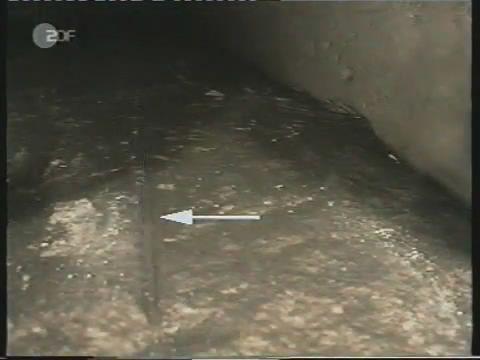
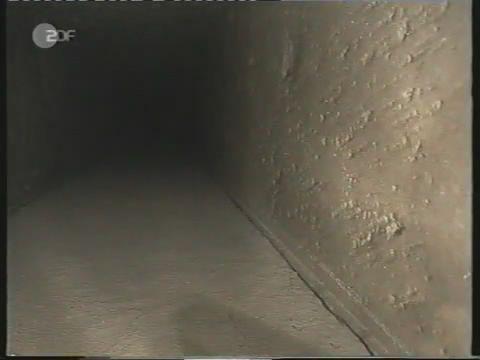
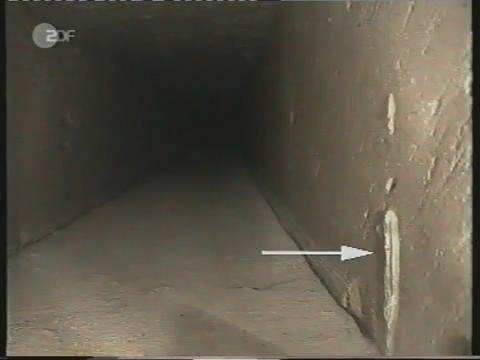
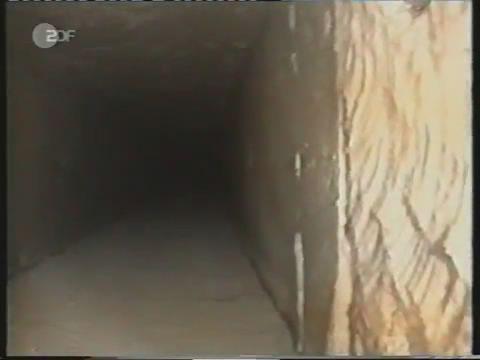


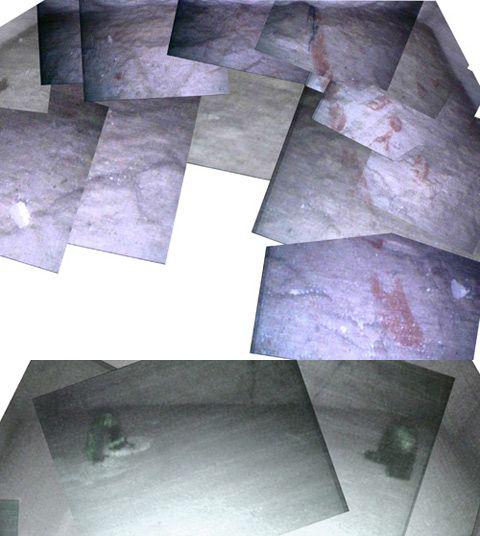

In the northern mine they found the stone ball and a piece of wood and in South mine was found hook made of copper or bronze.

Both artifacts were brought to England and a member Astronomer Royal of Scotland.
Reported the discovery on December 26, 1872, the journal "Nature" published drawing of these artifacts, and then they disappeared ...

In 1993, the search resulted in the British Museum, where they are today.
Part of the tree, found in mines, absent until 2001, until surfaced in the museum Marischal, Aberdeen.
Although the latter is confident that the fragment tree is among their collections, they have not yet determined its position among the finds.
In the mine, and later studied Gantenbrink was just discovered a fragment of a long piece of wood lying in its bending, which was very similar to the previously discovered in the northern mine in 1872.

In 1993, due to the remarkable discovery raised a wave of new interest in the Great Pyramid. German engineer Rudolf robotics Gantenbrink hired to install inside the pyramid of ventilation systems, received permission to design a robot to explore the mine in the Queen's Chamber. Unlike similar mines coming from the King's Chamber,

these approximately 20-centimeter square of the mine did not have a known destination, they were on the surface of the pyramid. A detailed account of these studies anyone can find on a personal site Gantenbrink: www.cheops.org/
The robot, named Upuat II (Upuaut II, the discoverer of ways) and equipped with lights, a camera and a laser pointer, received excellent reviews specialists. Go up the South Mine Queen's Chamber robot ran into a solid block of limestone, from which protruded two mysterious brass details.

Monday, 16 September 2002 at 8:00 pm Channel FOX (USA) started the live broadcast of the new study South mine in the Queen's Chamber in the Pyramid of Khufu.

The two-hour prelude FOX / National Geographic on the Giza plateau was preceded by a moment when, finally, the new robot reached the mysterious "doors" and inserted into a drilled hole camera.
Was done painstaking preliminary work. To determine the length of the drill bit, it was necessary to know the thickness of the first block of limestone using ultrasound. Dr. Hawass oversaw preparation, and then gave the order to drill so-called "door».

Now let's review the ideas about what lies behind the "door».
Before broadcasting Dr. Zahi Hawass, chairman of the Supreme Council of Antiquities (SCA) in Egypt, expressed the hope that is found some book might blog Khufu.
According to Hawass doors were built for religious purposes because of the books, hiding behind them. Books were called to lead the dead to the underworld dangerous roads.
German Egyptologist Ranier Stadelman (Stadelman), who led the work of Rudolf Gantenbrink in 1993, believed that the door is designed for the soul of the pharaoh seeking to achieve Osiris (the star Sirius). He believed that copper objects serves as a handle by which Pharaoh will open the "door».
Robert Bauval, author of "The Orion Mystery", predicted that at the end of the shaft will be found the statue, and the mine was used for observing the stars.
John Anthony West, author of "Snake in the sky," said that behind the door there is nothing but stone.
Georgie Nuri (Noory) argued that behind the "door" is a place about 10 meters long, which contains the sacred sand.
The excitement reached its peak. Hawass warned viewers that the door can be anything or not. His comments come to seem prophetic reality, because the camera is passed through the drilled hole, and appeared distorted. At first nothing was visible.
Video:

With inimitable style and undisguised satisfaction Dr. Hawass declared: "This is - another door, and with a crack!»
A week later, Hawass has promised to continue the research with the National Geographic Society.
September 23, 2002 in the news reported that successfully investigated North mine in the Great Pyramid. This mine, located opposite its southern "sister", the robot Gantenbrink could not examine because of impassable last bend. The current team has taken into account the previous shortcomings in the design of the robot. Robot 2002 could drive around a bend as moving across the floor of the mine and on the ceiling.

Sent to North mine robot found another obstacle, like "doors" Gantenbrink South mine.

Note that this unit also has two metal brackets, but in better preservation.

On 2009 - 2010 год Zahi Hawass planned drill and a second door behind the first, with metal handles.












